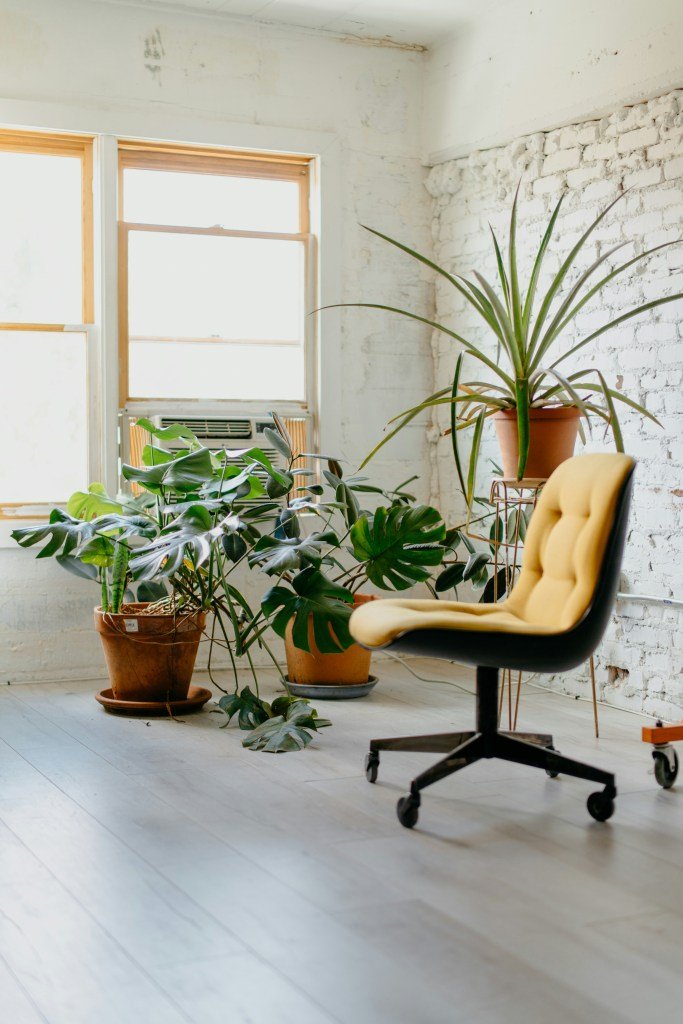Maintaining physical activity and spiritual wellness is essential in today’s fast-paced world. Chair yoga offers an accessible and effective way to practice yoga, especially for those with limited mobility, balance issues, or those new to yoga. As a Christian yoga instructor, I believe integrating chair yoga into your routine can help you connect with your body and spirit, enhancing your overall well-being. Let’s explore the basics of chair yoga, select the right equipment and a detailed guide, and follow with a 20-30-minute class plan.
What is Chair Yoga?
Chair yoga is a gentle form that can be done sitting on a chair or standing while using the chair for support. It adapts traditional yoga poses to be more accessible, making it an excellent option for seniors, those with disabilities, or anyone seeking a gentler yoga practice. Chair yoga helps improve flexibility, strength, balance, and overall wellness, fostering a sense of peace and connection with God.
Selecting the Right Equipment
The right equipment is crucial for a safe and effective chair yoga practice. Here’s what you need:
1. Chair
Features to Look For:
- Stability: The chair should be sturdy with a solid frame, preferably without wheels.
- Height: Ensure the chair allows your feet to rest flat on the ground with your knees at a 90-degree angle.
- Back Support: A chair with a straight back provides better support for seated poses.
- No Armrests: Chairs without armrests allow more freedom of movement for various poses.
Examples:
- Dining chairs
- Folding chairs
- Office chairs (without wheels)
2. Yoga Mat
Purpose:
- To prevent slipping, provide cushioning, especially if practicing on a hard surface.
Features to Look For:
- Thickness: A standard yoga mat thickness (about 1/4 inch) provides adequate cushioning.
- Texture: Ensure the mat has a non-slip surface.
3. Optional Props
- It is helpful for added support and stability in certain poses.
Yoga Strap:
- It helps with stretching and maintaining proper alignment.
Cushions or Blankets:
- Provide extra comfort and support for seated poses.
How to Use the Equipment
1. Setting Up Your Chair
- On a Yoga Mat: Place the chair on a yoga mat to prevent slipping.
- Proper Positioning: Position the chair in a space with enough room to move freely around it.
2. Using Yoga Blocks
- Seated Support: Place blocks under your feet if they do not reach the ground comfortably.
- Extended Reach: Use blocks to bring the floor closer to you in forward bends or side stretches.
3. Using a Yoga Strap
- Assisted Stretches: The strap can help you reach your feet or hands in poses where flexibility is limited.
- Posture Alignment: Use the strap to maintain proper alignment in poses.
A Short 20-30 Minute Chair Yoga Class
Opening Prayer and Warm-Up (5 minutes)
Opening Prayer: “Dear Lord, we thank You for this time to connect with our bodies and Your presence. Guide us through this practice, bringing healing and peace. Amen.”
Warm-Up:
- Seated Mountain Pose: Sit tall with feet flat on the floor, hands resting on your thighs. Inhale deeply, lengthening your spine. Exhale and relax your shoulders. Repeat for 1-2 minutes.
- Seated Cat-Cow: Place your hands on your knees—Inhale, arching your back and lifting your chest (Cow Pose). Exhale, rounding your spine and tucking your chin to your chest (Cat Pose). Repeat for 1-2 minutes.
Main Practice (15-20 minutes)
1. Seated Forward Bend (Uttanasana):
- Sit on the edge of the chair with feet hip-width apart.
- Inhale and lengthen your spine. Exhale and fold forward from your hips, reaching for the floor or resting your hands on your thighs. Hold for five breaths.
2. Seated Warrior I (Virabhadrasana I):
- Sit sideways on the chair with your right side facing the back.
- Extend your right leg, keeping your left foot flat on the floor.
- Inhale, raise your arms overhead, facing forward. Hold for 5 breaths. Switch sides.
3. Seated Twist (Ardha Matsyendrasana):
- Sit tall with feet flat on the floor.
- Place your right hand on the back of the chair and your left hand on your right knee.
- Inhale, lengthen your spine. Exhale, twist to the right. Hold for five breaths. Switch sides.
4. Seated Side Stretch (Parsva Urdhva Hastasana):
- Sit tall with feet flat on the floor.
- Inhale, raise your right arm overhead. Exhale, lean to the left, placing your left hand on the chair for support. Hold for five breaths. Switch sides.
5. Seated Pigeon Pose (Eka Pada Rajakapotasana):
- Sit tall with feet flat on the floor.
- Place your right ankle on your left knee.
- Inhale, lengthen your spine. Exhale, gently press down on your right knee, feeling a stretch in your hip. Hold for five breaths. Switch sides.
6. Seated Leg Extension:
- Sit tall with feet flat on the floor.
- Extend your right leg straight, with your heel resting on the floor.
- Inhale, lengthen your spine. Exhale, fold forward slightly over your extended leg. Hold for five breaths. Switch sides.
Cool Down and Closing Prayer (5 minutes)
1. Seated Forward Bend:
- Sit on the edge of the chair with feet hip-width apart.
- Inhale, lengthen your spine. Exhale, fold forward from your hips, allowing your arms to hang down. Hold for five breaths.
2. Seated Neck Stretch:
- Sit tall with feet flat on the floor.
- Tilt your head to the right, bringing your right ear towards your right shoulder. Hold for five breaths. Switch sides.
3. Seated Meditation:
- Sit comfortably with hands resting on your thighs or in your lap.
- Close your eyes and focus on your breath, allowing your body to relax and your mind to quiet. Meditate for 2-3 minutes.
Closing Prayer: “Lord, we thank You for this time to nurture our bodies and spirits. May Your peace and strength remain with us throughout the day. Amen.”
Chair yoga is a beautiful way to stay active and connected with your body, regardless of your physical condition. By selecting the right equipment and learning how to use it effectively, you can create a safe and supportive environment for your practice. Incorporate this 20-30-minute chair yoga class into your routine to experience yoga’s physical, mental, and spiritual benefits. Embrace the gentle movements, and let your practice be a time of connection and gratitude to God for the gift of your body and His presence in your life.
*This article contains links that may earn us a small commission. This costs you nothing, and we only link to products we have used and genuinely recommend.*

